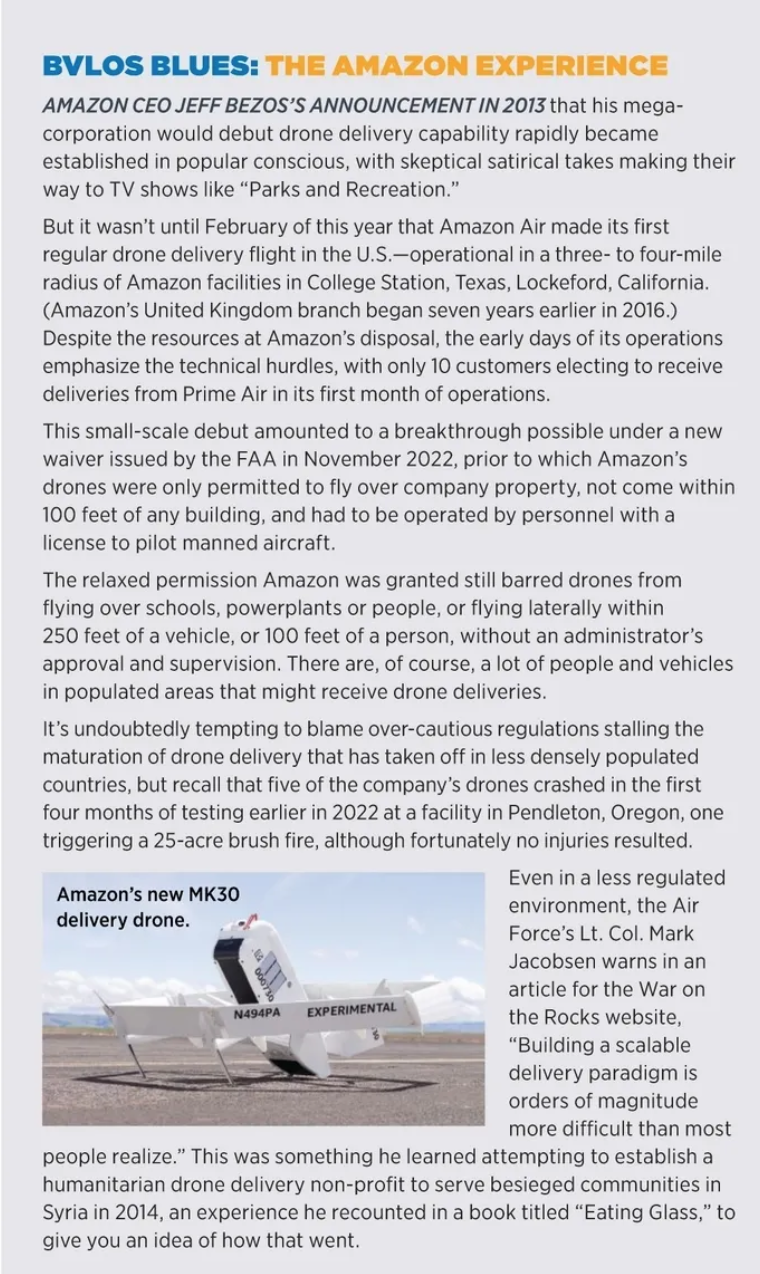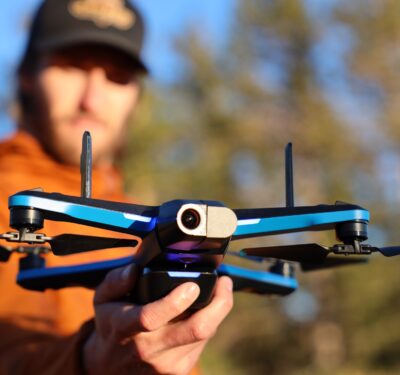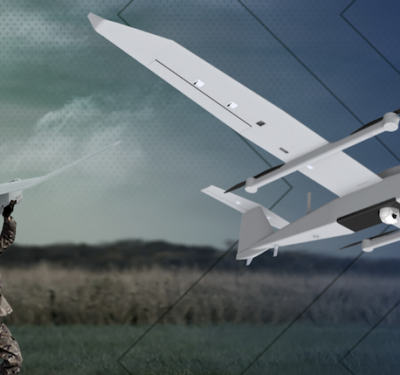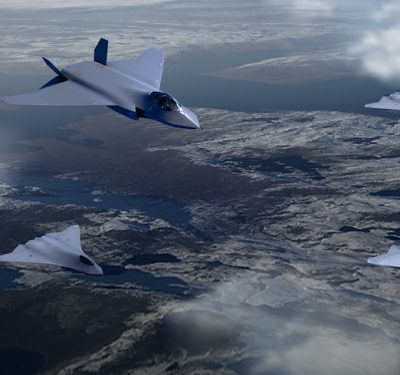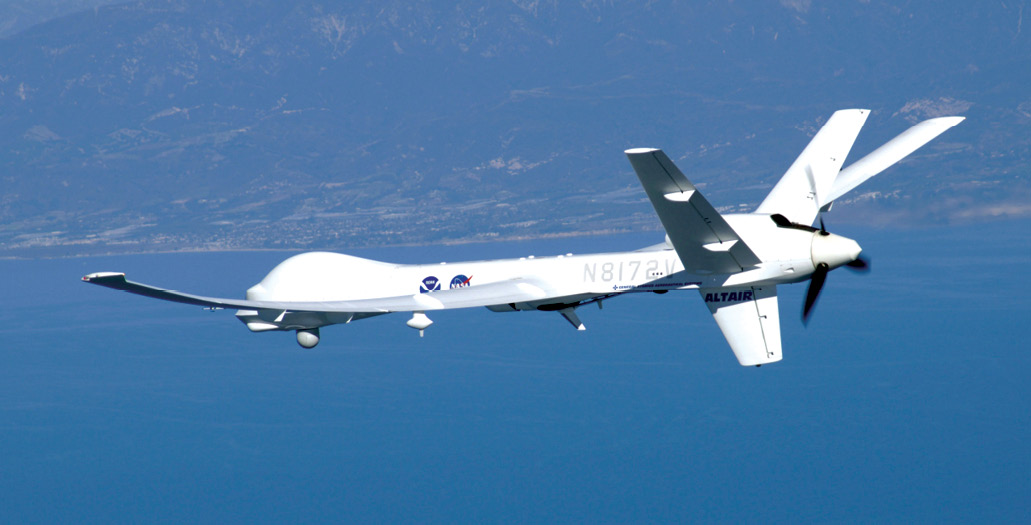
The technologies are in place to allow drones to fly beyond the visual line of sight of their operators, but regulatory and operational hurdles remain before BVLOS flights can scale up.
The idea of automated unmanned aerial systems by now thoroughly permeates the popular vision of the near future. Before long we expect small unmanned aircraft to deliver goods purchased online, help rescue individuals in dire circumstances, guard high-security perimeters and survey large swathes of the planet.
Yet while civilian use of small unmanned systems has skyrocketed in recent years, the vast majority are only authorized for flying within visual range of their controller. In the United States, longer-distance BVLOS flights by civilians are only possible via waivers from the FAA due to the technical and legal safety challenges. After all, regulators and companies alike want to be sure drones roving far beyond the vision of their operators aren’t crashing or colliding with other vehicles, or people.
While the technologies for safe BVLOS flight already exist, the challenge remains to arrive at an appropriate and case-sensitive safety regime that removes such long-range flights from the realm of special exemptions and transforms BVLOS flights into a mode of operation that can be done regularly, safely and at larger scale.
USE CASES
Consumers and companies alike have found plenty of uses for drones that don’t require BVLOS capability, from filming documentaries to event security and performing short-range infrastructure inspection. But routine and scalable BVLOS operations could become game changers in several of industries, in many cases more cost- and energy-efficiently performing tasks that involved larger more expensive helicopters, airplanes and even delivery vans.
Drone delivery is one of the most discussed BVLOS applications. If eventually implemented on scale, it could help lower the financial and time costs of “last mile” delivery from warehouse to homes. However, it remains highly challenging as it requires the drone to interact relatively closely and safely with private homes and infrastructure; and the targeted scale of service delivery requires a high degree of automation. Practically speaking, drone delivery remains only in early stages of operationalization in the U.S.
Last-mile delivery isn’t the only iron in the fire, however. Development of larger eVTOL aircraft for heavier cargoes is also proceeding—often beginning as manned platforms with the potential to evolve into unmanned ones.
Other prominent uses include:
• Medical delivery, such as Zipline’s delivery of blood supplies in Africa
• Emergency medical response, such as delivering life-saving drugs or automated external defibrillators
• Infrastructure inspection
• Survey and environmental monitoring
• Search and rescue and disaster response, including delivering supplies or flotation devices
• Patrol and surveillance
THE RULES
By the FAA’s own reckoning, it issued its first certificate for civilian UAV operations in 2005 for the General Atomics Altair, an unarmed an unarmed MQ-9 combat drone leased to NASA and tweaked for FAA compliance while undertaking BVLOS flights. It took eight more years before the FAA issued its first two commercial airworthiness certificates in 2013. The commercial UAS ops that followed involved hydrocarbon giants using former military drones like the Insitu/Boeing ScanEagle and AeroVironment’s Puma AE for environmental survey and infrastructure inspection. From then on, there was a roller coaster of developments, including authorization of the first overland flight in 2014, establishment of drone testing centers and rolling releases of new safety standards.

The most important instrument curtailing BVLOS flights is regulation Part 107.31, which forbids “flying a small UAS beyond your ability to clearly determine the position, altitude, attitude, and movements of the small unmanned aircraft, with unaided version.” Thus, a Part 107.31 waiver is prerequisite for legal BVLOS flights in the U.S.—though the existing process to obtain one isn’t very fast or practical.
Although a wide array of technologies now exist to implement safe and sustainable BVLOS flights, regulators in the FAA are still trying to determine what combination of those technologies—and drone laws—will result in a safe aviation sector.
Until the FAA’s new rules regime is defined for good, both drone manufacturers and operators face risks and limitations when moving ahead with production and operationalization. A helpful intermediate step would be to develop a system simplifying and streamlining procedures for one-off exemptions as arguably is facilitated by the European Aviation Safety Agency’s 10-step SORA (Specific Operations Risk Assessment) process applicable to drones weighing up to 600 kilos.
Looking across the globe, China and Canada, like the U.S., rely on purely exemptions-based regulatory mechanisms for BVLOS operations. However, the U.K., France and Germany supplement the exemptions system with carved-out permissions for BVLOS operations in standardized scenarios. Japan is a notable outlier, having standardized permissions for a broader range of commercial BVLOS operations in 2022.
A TECH RECIPE FOR BVLOS FLIGHT
The Emitters
To “feel seen” may be a cliché of modern internet discourse, but it’s also vital to mitigating air collision risks. Afterall, if a drone’s autonomous AI or operator is aware of another aircraft’s position, bearing and identity, they can stay out of each other’s way. And the simplest way to achieve that is for those aircraft to loudly and continuously broadcast that information to everyone around able to listen, like an over-sharing relative on social media.
In the past, commercial aviation relied upon the Traffic Collision Avoidance System (TCAS) transponders to communicate an aircraft’s speed, range and altitude. But TCAS was too heavy, expensive and difficult to adapt for smaller UASs.
The practical standardized alternative now mandated by the FAA’s Next Generation Air Transport System initiative is Automatic Dependent Surveillance-Broadcast (ADS-B), which continuously broadcasts an aircraft’s GPS coordinates, speed and ID to air traffic control and other aircraft, with a maximum range of 200 nautical miles. Importantly, ADS-B can be integrated at an acceptable size, weight and power (SWaP) cost for small UAS. FAA-compliant ADS-Bs cost in the low-to-mid thousands of dollars, and are divided into receivers and transmitters (ADS-B In and ADS-B Out).
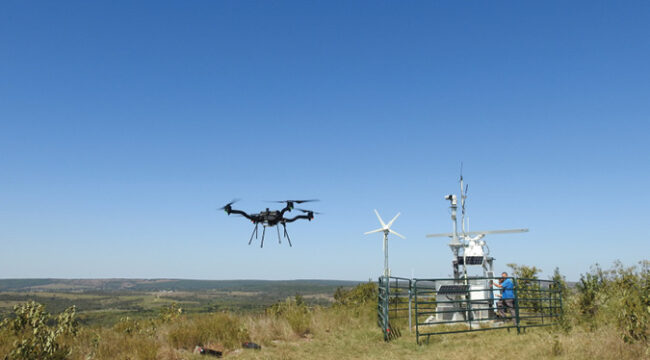
That’s especially helpful for unmanned aircraft, which innately tend to have small heat signatures and radar-cross-sections due to their size and skins made of nonreflective composite materials, and which thus may be difficult to detect and track until they are fairly close. The returns from transponders and radars can be networked and fused together to create a national (and in time, global) unmanned traffic management picture.
The Sensors
ADS-B might seem like a one-stop collision avoidance solution, until you consider you can’t guarantee every platform is in compliance with an ADS-B Out transmitter for myriad reasons. Furthermore, drones that fly low or interact closely with structures and terrain need to see, not only be seen, to react to any obstacles.
That requires an integral detect and avoid (DAA) or sense and avoid (SAA) capability.
To be sure, ground-based radars supplemented by UTM can do the job to an extent, but those become less effective the further away the drone flies from them, and can’t help with drones navigating risks from low-lying obstacles and low-flying aircraft. Thus, BVLOS drones will usually need their own organic sensors that can be fitted at acceptable SWaP. That’s a serious challenge given the limited payloads of most small unmanned aircraft.

There is an array of available sensor solutions, each with its own strengths and weaknesses:
• Radar brings potential long-range scan table even in low visibility conditions, but tends to be costly and energy-consumption heavy
• LiDAR (or “laser radar”) is comparatively more affordable and very precise, making it ideal for closer interactions with surface obstacles. However, it tends to be short ranged and has a narrow field of view.
• Electro-optical and infrared sensors are also affordable and light, but are short-ranged and easily obstructed by weather and can be limited by narrow field of view, or mission-oriented needs to scan the surface. IR may also struggle to detect drones that emit relatively little heat.
• Acoustic sensors (like the human ear) are often pretty good at detecting aircraft even before they can be seen—and the high-tech versions have low SWaP requirements and aren’t affected by visibility. However, ambient noise can degrade their effectiveness.
Ideally, DAA systems should incorporate multiple sensors—with longer-range sensors able to cue optical ones, both to increase fidelity and cover capability blindspots.
Fortunately, there has been substantial progress in miniaturizing sensors with collision-avoidance utility. When it comes to optical cameras, improved performance at smaller sizes has been driven by the smartphone industry. But there’s also, for example, the EchoFlight PESA phased array radar, which weighs only 1.6 pounds, can scan across a 120×60 degree field of view and allegedly can detect a DJI Matrice-600 octocopter drone more than half a mile away, and a Cessna light plane 1.24 miles away.
SARA’s PANCAS airborne acoustic sensor is another system used for detect-and-avoid on government and commercial Class 2 and 3 UAS. It has primarily been used by government aircraft but the company’s website says it may enable securing a BVLOS waiver. It consists of multiple acoustic probes and a processor that together weigh just over a pound and are designed to cancel out noise from the UAS. The system has 360-degree coverage, can generate estimated bearing and range of approaching aircraft, and can formulate and command collision avoidance maneuvers.
A 2018 FAA Pathfinder report found PANCAS could “reliably detect an incoming intruder” from six miles away, compared to 2.7 miles for tested optical sensors, and did so without failure.

The Autonomy
Having fulfilled the “detect” side of “detect and avoid,” it’s still another thing for a drone to recognize risks and actually avoid them, especially in response to an unexpected development. After all, a drone’s command link may be subject to disruption due to weather or obstructing terrain and buildings, or it may encounter a risk that requires a reaction faster than a person-in-the-loop can provide. And, of course, there’s the trend toward largely autonomous UAV operations that could allow large-scale use without requiring an individual human operator for each drone. There may still be the person in the loop, but that person may be overseeing 20 loops. Again, in that scenario, unmanned systems must be able to react to risks that may come before they can attract a human supervisor’s attention.

Behavioral artificial intelligence algorithms not only assess threats but rapidly adapt their behavior. Some basic examples already commonly implemented include programming drones to move back to their ground control station after losing the command signal, or automatically attempting to land once batteries run critically low.Looking forward, unmanned aircraft will need to correctly interpret returns from radar, ADS-B signals or optical sensors, not just rely on human deconfliction.
Interpreting the returns from optical and LiDAR sensors may pose a challenge to artificial intelligence algorithms, but iterative machine learning algorithms in particular can enable drones to learn to identify potential collision threats and act accordingly. That said, there’s a need for vigilance against flaws and biases in datasets used for machine learning that can result in unexpected and bizarre outcomes.
The Bandwidth
As important as it’s becoming for unmanned aircraft to be capable of handling situations autonomously, it’s of course preferable that they retain their wireless link to the ground control station as consistently as possible. Unfortunately, it follows that as BVLOS drones perform increasingly important tasks, the damage that malicious actors could inflict by disrupting, spoofing or even hacking into the link grows more severe. The vulnerability has been highlighted by the frequency with which civilian drones used by combatants on both sides in Ukraine are forced down or hijacked.
Anticipating this problem, the FCC laid out proposed rules that would reserve the 5030-5091 MHz spectrum band for unmanned operations in January, with 10 mhz allocated for line-of-sight ops, and an unclear allocation reserved for BVLOS.
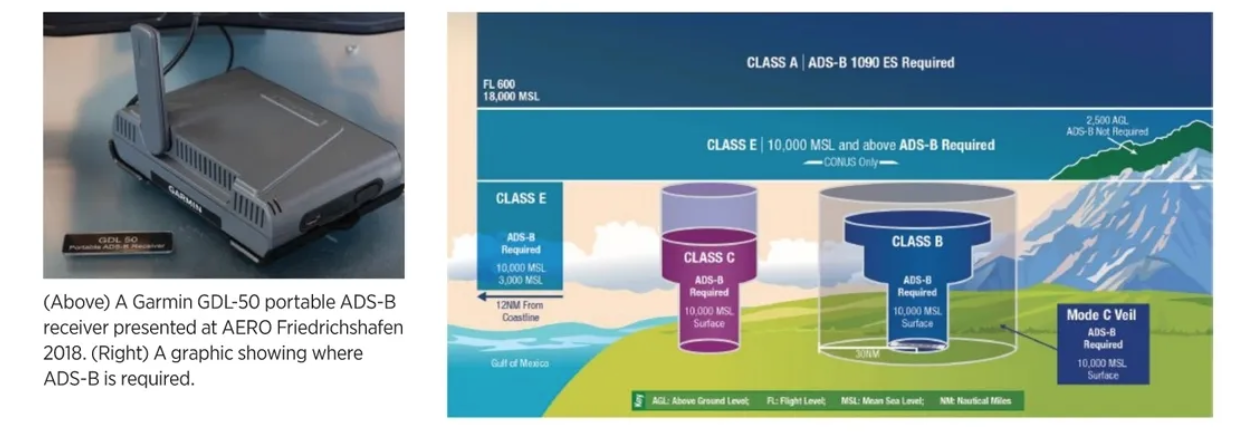
This rule-in-progress doesn’t limit access to other bands, but rather creates a complementary interference-protected “reserve” for use by unmanned systems. This same proposal also sought ways to give UAS operators licensed access to the VHF band used to communicate with air traffic control and other aircraft to improve airspace management.
